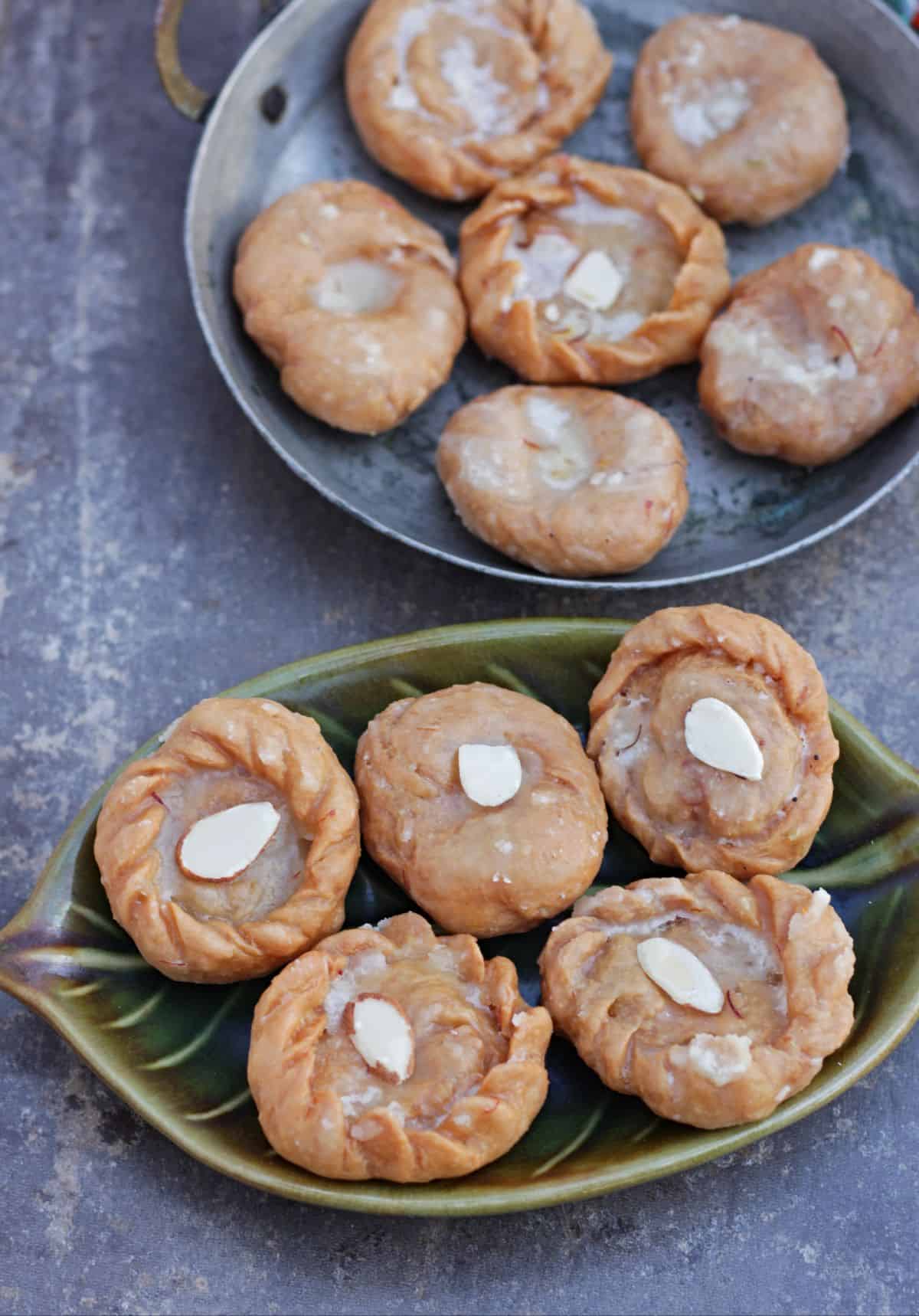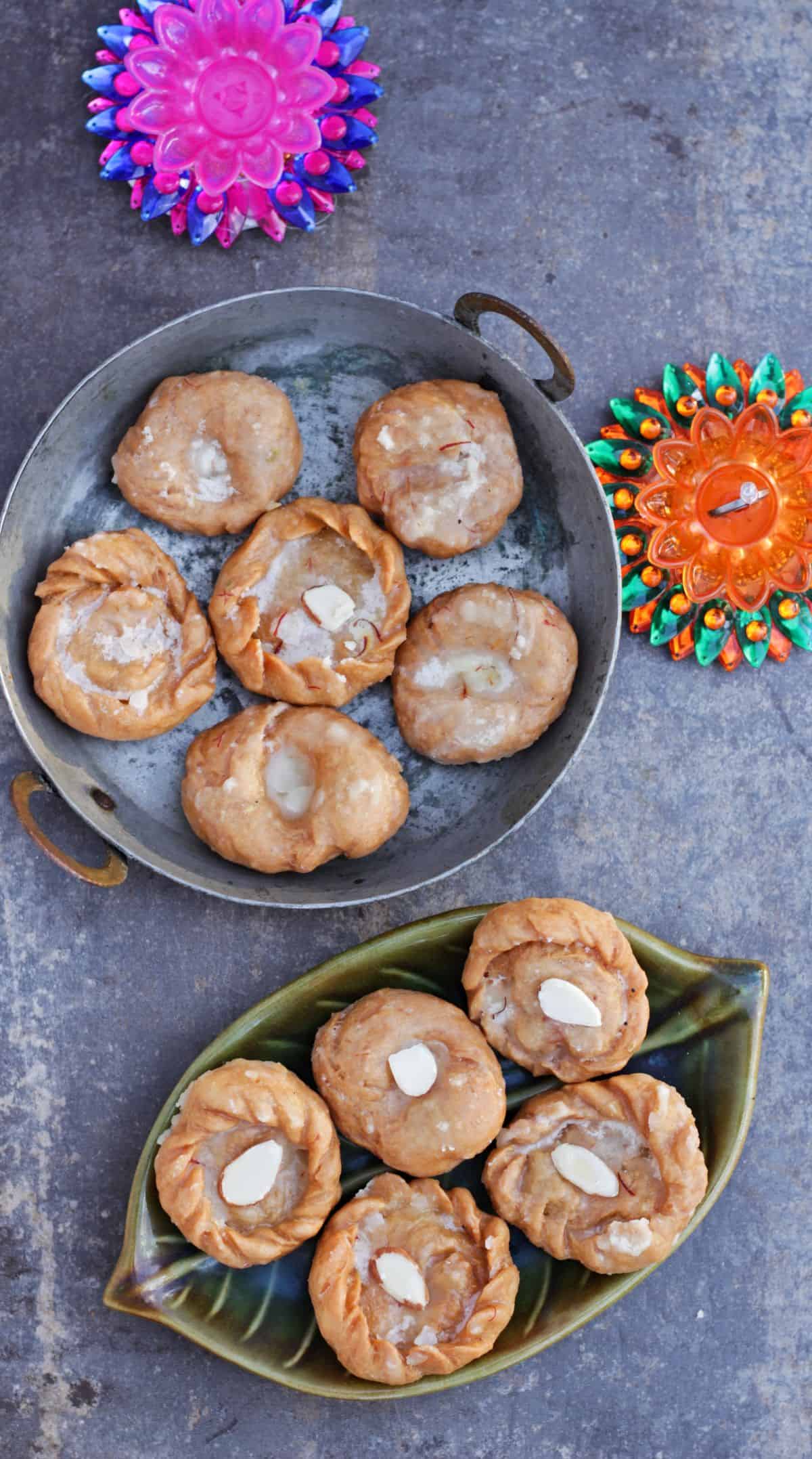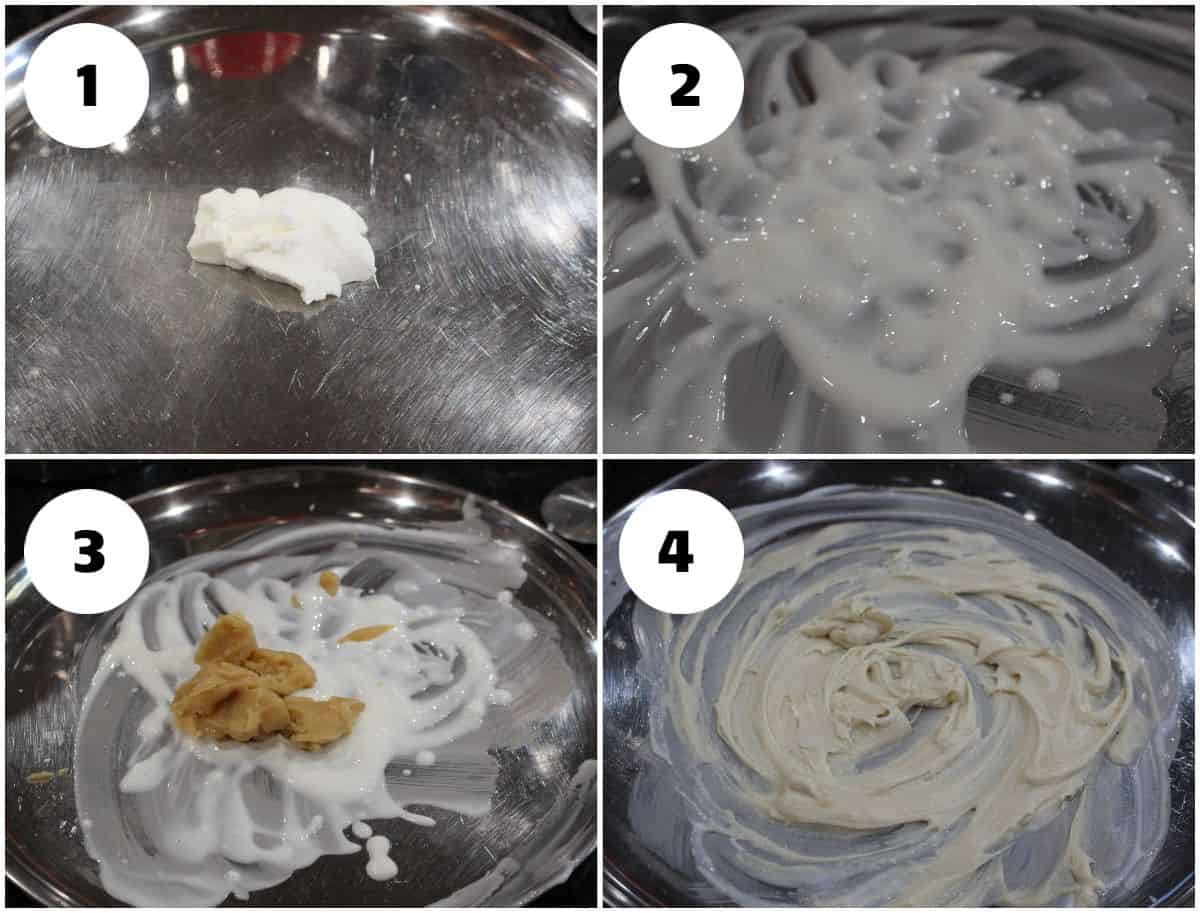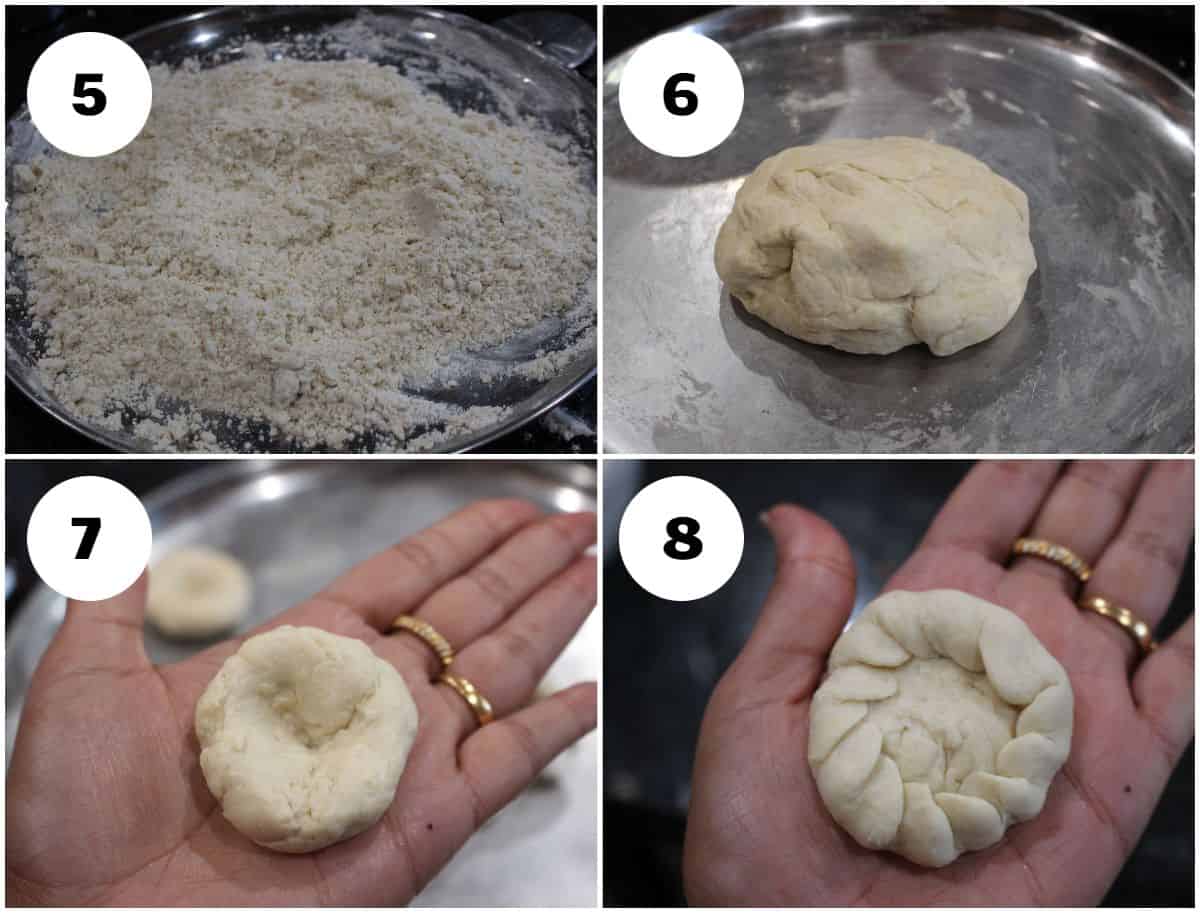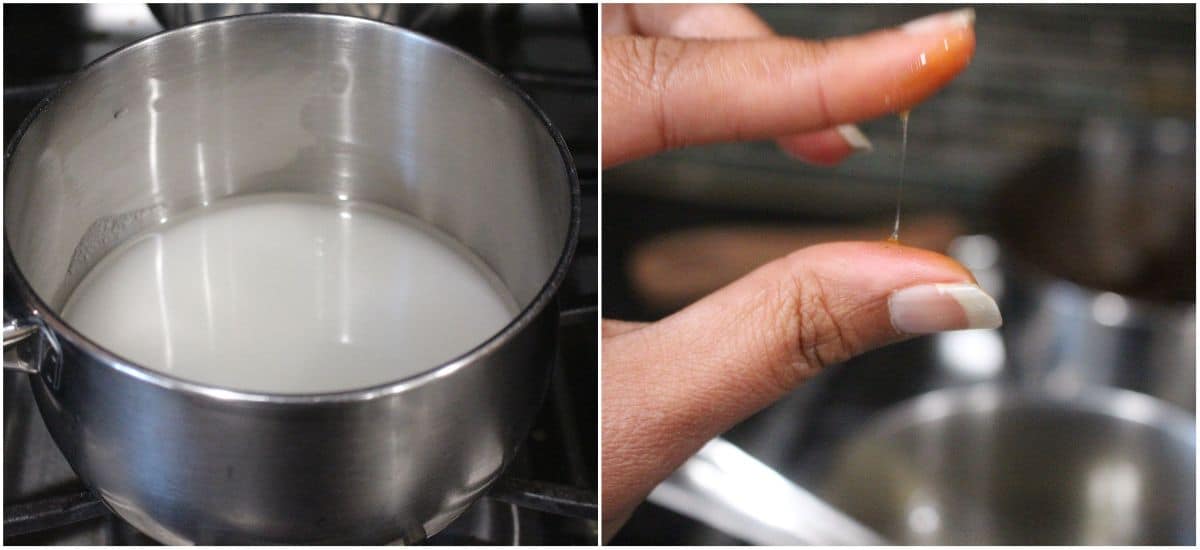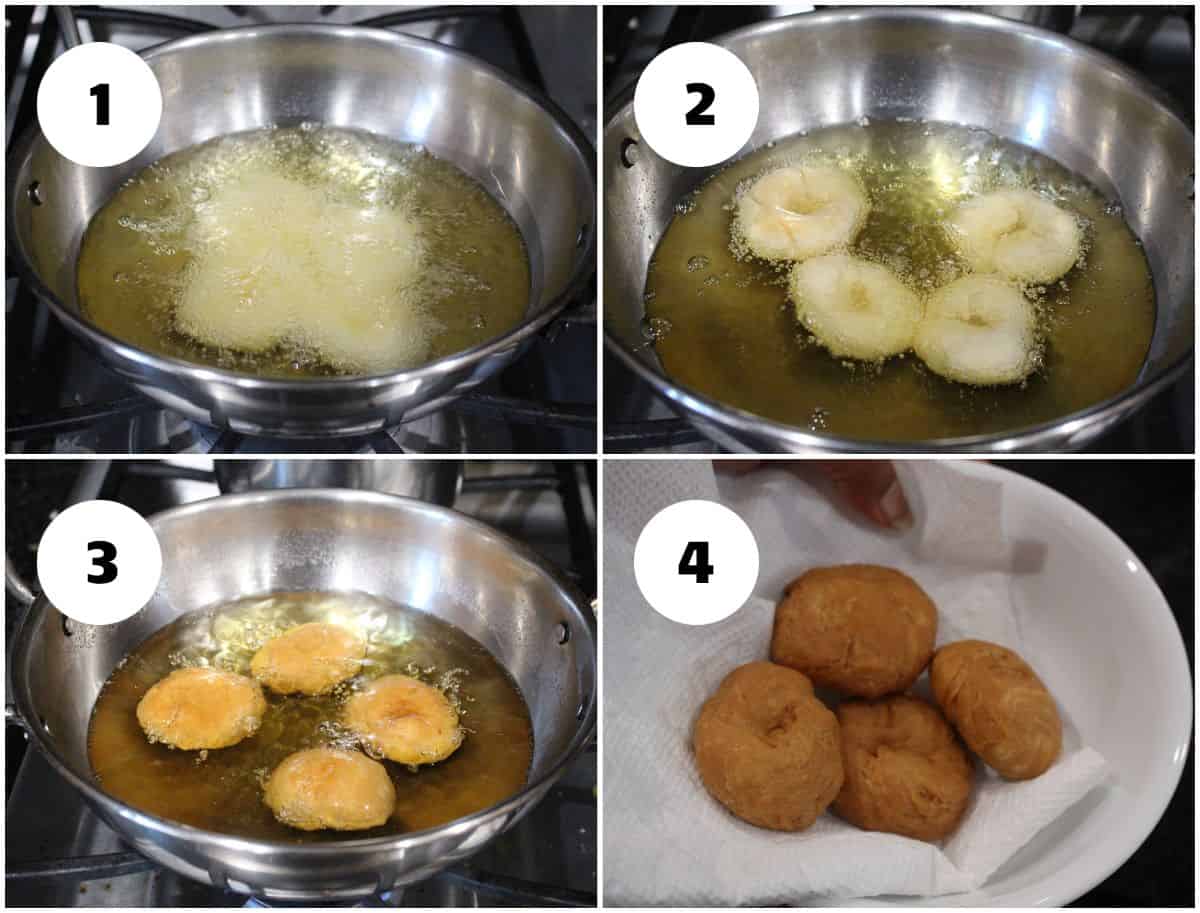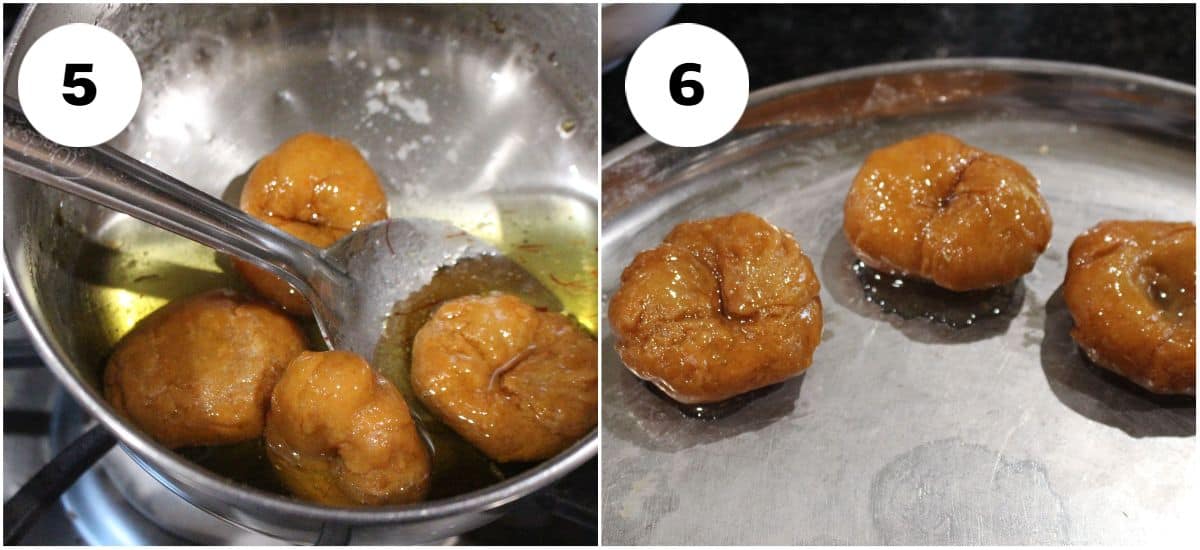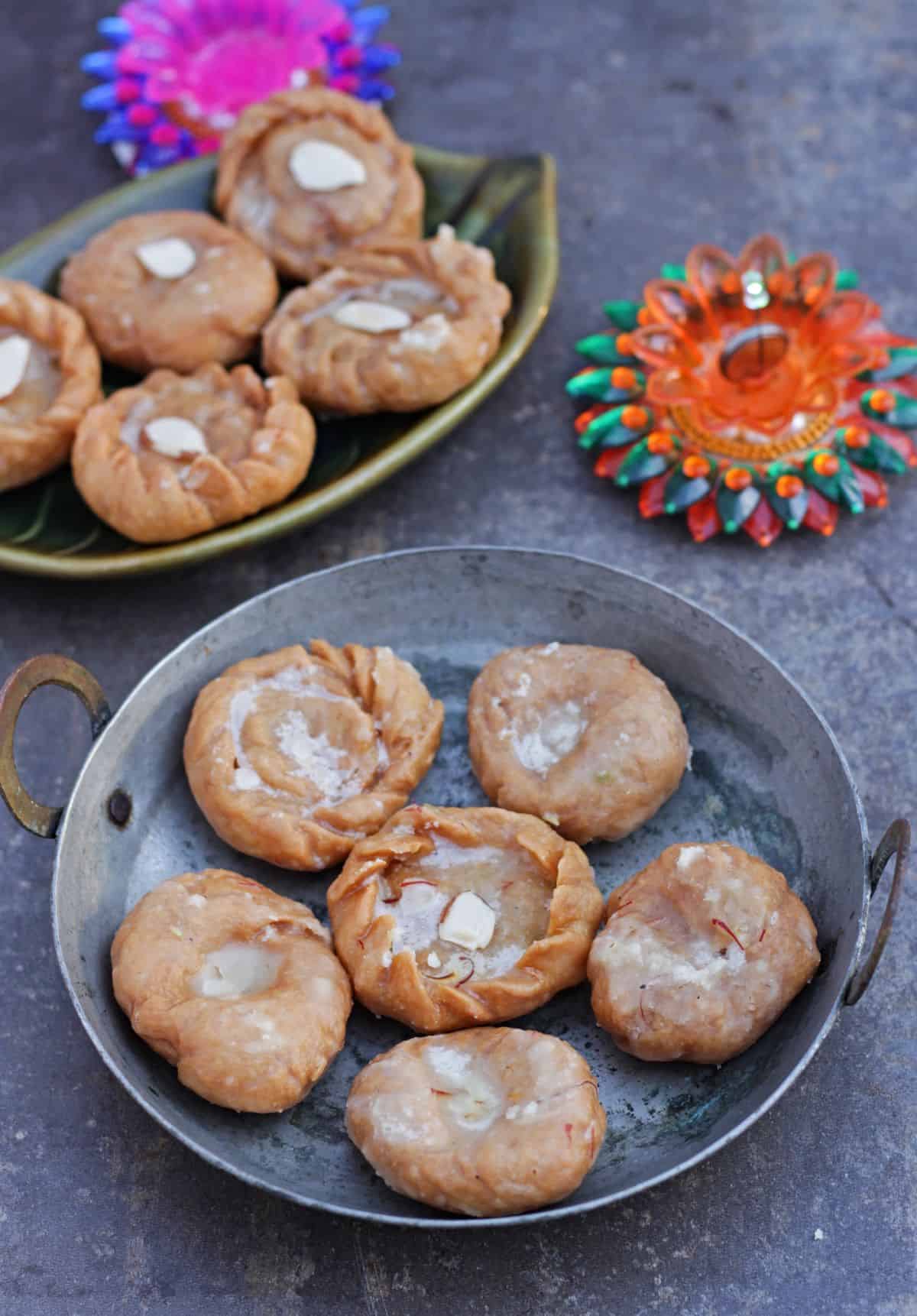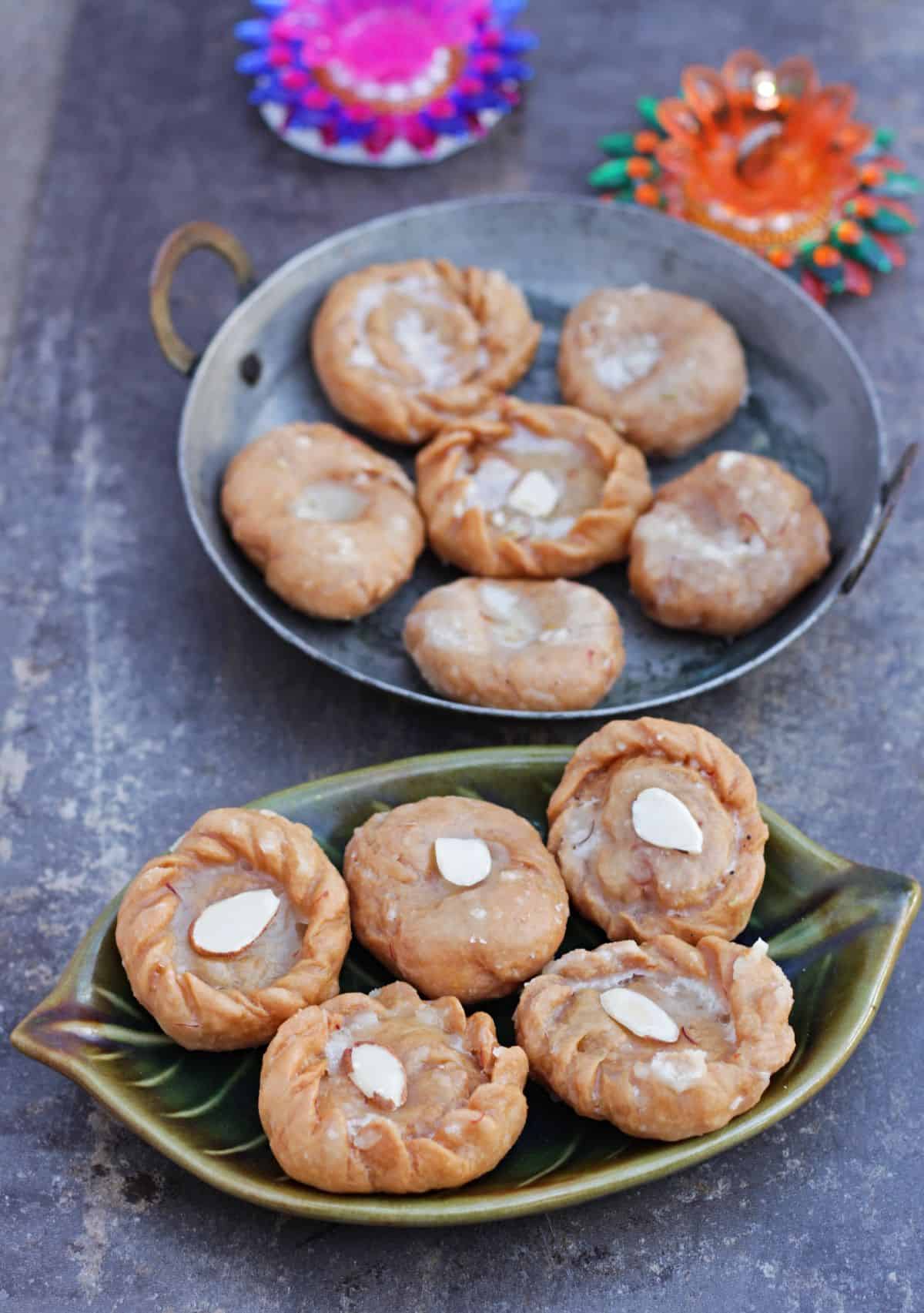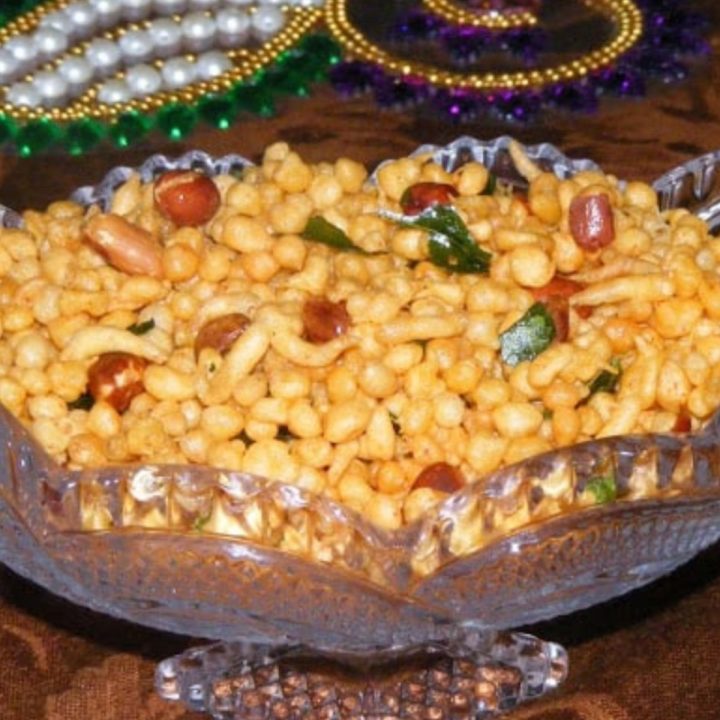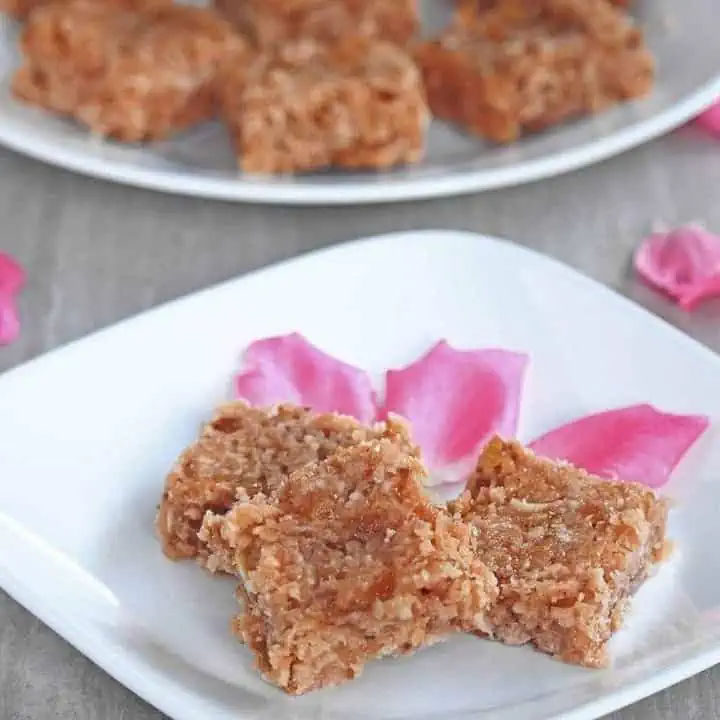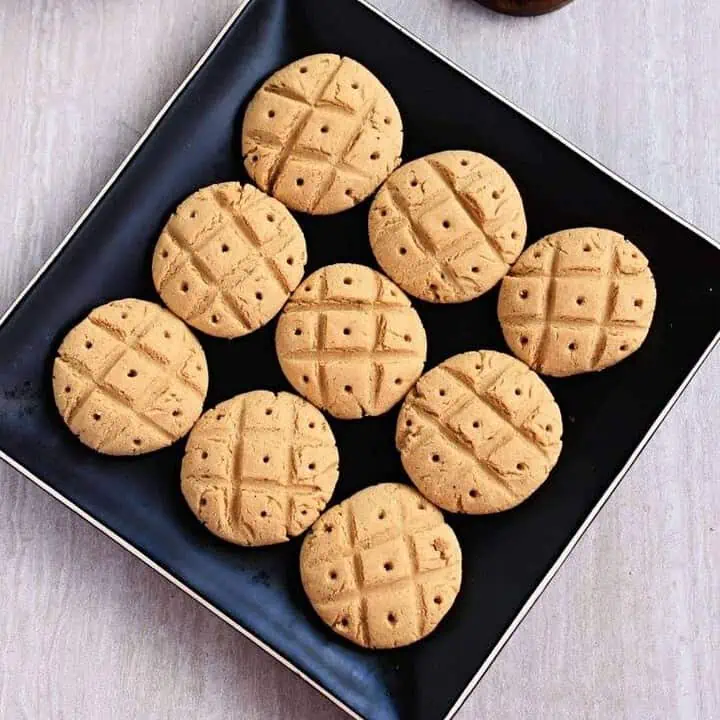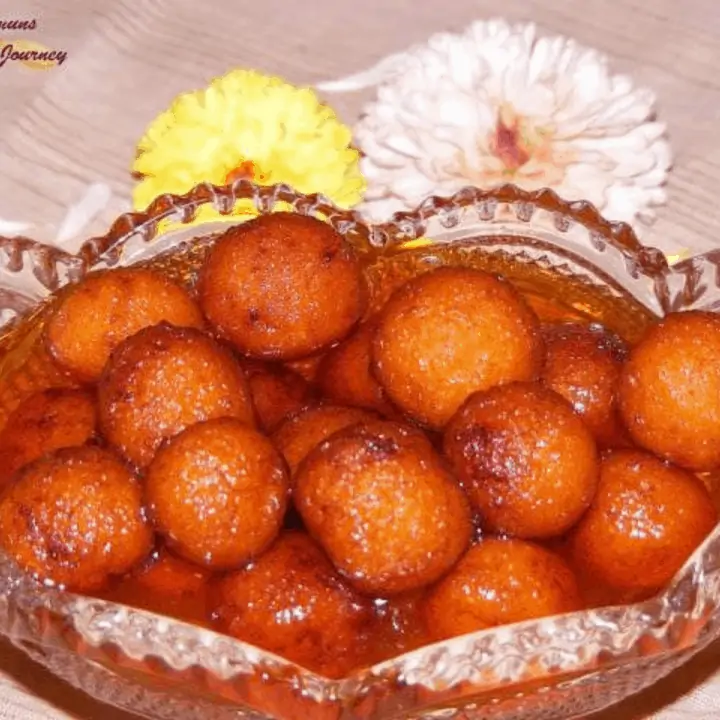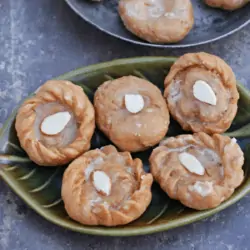Badusha is a traditional Indian sweet that is very often made during the Deepavali / Diwali festival. We had this sweet as a part of the menu for my father’s 60th Birthday and I was itching to make it since then. The badusha tasted so delicious that we asked the same person Susheela Mami, who catered for my father’s function to prepare this for us when we were coming back. From that time onwards, I was thinking that I should learn to make this recipe. Badusha / Balushahi also happens to be my mother’s favorite sweet. She would always order it for Diwali. I was not a big fan of it growing up and Boondi ladoo was my favorite then. But lately, I have really been enjoying the badusha. My husband and kids equally enjoyed the badusha and I am so glad that I was able to nail the recipe. I have included all the tips and tricks in the process as well as in the notes below.
Ingredients to make Badusha Recipe
Check the recipe card at the bottom of the page for exact measurements and printable detailed recipes.
All purpose flour / Maida - I have been using All-purpose flour all the time and it works great.
Ghee - Make sure the ghee is not liquid and sort of set when making the badusha.
Curd/yogurt – I use my homemade plain yogurt for the recipe.
Baking soda - Make sure you use a fresh batch of baking soda.
Water - as needed to make the dough
For sugar syrup
We need sugar and water. I use a little cardamom powder and saffron for flavoring and some lemon juice to prevent crystallization of the syrup.
Procedure to make Badusha Recipe
To make the dough
Place the curd/yogurt in a large plate (1) and add the baking soda to it. Rub it well with your fingers until it forms a frothy mixture (2).
Now add the ghee to the curd mixture (3) and mix it well (4).
Once the ghee is incorporated well into the yogurt mixture, add the flour. Keep mixing little by little until all the flour is used.
This will resemble the texture of bread crumbs (5). This step is very important. Do not dump all the ingredients in a bowl and mix. Each and every ingredient has to be incorporated well and hence it is very important to follow this step to ensure soft badusha.
Add water very little at a time and form a soft dough. Do not add all the water at once. Knead the dough well for about 5 minutes until it becomes soft and springy (6). Cover with a damp cloth and let it rest for about ½ hour.
Then make lemon size balls with the dough and flatten it slightly. Press gently in the center with your thumb to give a small depression. Do this for the rest of the dough (7). We could also shape the balushahi in a decorative pattern by folding the edges (8).
To make the Sugar syrup
Add the sugar and water to a pan and cook over medium-high heat until the sugar dissolves. Cook it further until you attain one-thread consistency. To check for this take a tiny bit of the syrup in between your forefinger and thumb and pull it apart. You should be able to see that the syrup is sticking between your fingers and forming a thread.
At this stage, add the cardamom powder, mix well, and turn off the flame. Then add the lemon juice to it and mix well. Add the lemon juice only after you take the syrup off the flame.
To fry the Badusha
Heat the oil in a kadai on medium heat.
Once the oil is heated, turn off the flame entirely. Wait for a minute and then slowly drop the balushahi into the hot oil (1). It is very important that the oil is not fuming hot. Do not add the badusha if the oil is too hot. Switch off the flame, wait until it cools down a bit, and then add the balushahi. If we add it in too hot oil, the outside will cook, and the inside will be raw and doughy.
Once the badusha floats to the top (2), switch on the flame and keep it in low. Cook until the badushas are golden brown (3). This step will take about 10-12 minutes for each batch of badusha dropped in the oil. I added about 4 badusha’s at a time.
Once the badushas are cooked, remove it on a paper towel (4).
Immediately transfer it to the warm sugar syrup (5). It is very important that the sugar syrup is warm when dunking the badusha’s, hence it might be necessary that you warm the sugar syrup in between batches. If the syrup is becoming too hard, you might want to add very little water and bring it back to boil.
Once the badushas are in the sugar syrup, invert it once and leave it for a minute. Then remove it from the syrup and place it on a plate (6). Do the same for the rest. Once the badushas dry a bit, you could add it once again to the sugar syrup and then take it out in a minute. This will ensure a good sugar coating on the balushahi.
Let it cool on the plate and then transfer it to a wire rack to ensure even drying. Once completely cooled, transfer it in an airtight container.
Expert Tips
Making the dough in the above-mentioned procedure is very important. Do not dump all the ingredients in a bowl and make a dough. The badusha dough needs to be always covered with a wet cloth, otherwise, it will dry out. Cooking the badusha in the lowest flame is very important. If we add it in too hot oil, the outside will cook, and the inside will be raw and doughy. You might have to warm the sugar syrup in between batches because the syrup has to be warm when adding the badusha to them.
Frequently asked questions
More Diwali Recipes
If you made this recipe and liked it, give a star rating on the recipe card or let me know in the comments below. You could also share it with me on Instagram using #MyCookingJourney and tagging me @sandhya.ramakrishnan. You could follow me and my recipes on Facebook |Instagram | Pinterest | Twitter/X
Recipe
